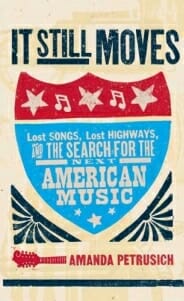Amanda Petrusich

Shared sights and insights from a sharp-eyed music critic
Amanda Petrusich has been suffering from genre meld. In the old days, the charts made clear distinctions—rock, country, rap, soul, R&B. No more. How did it happen that so many musical acts can now no longer be easily categorized? How should a music writer describe modern sounds? Perhaps most vital, what’s next?
To find out (note the word “next” in the book’s subtitle), Petrusich—a Paste senior contributing editor whose book originated as an article in these pages—devised a solo road trip, starting from her home base in Brooklyn. The result is a mixture of music journalism, American history and a paved journey akin to a contemporary Blue Highways. The mixture is as genre-fusing as contemporary music itself, which means it is usually interesting, sometimes daring, and at least occasionally confusing.
Although Petrusich chronicles numerous brief stops on her journey, the primary locales where she seeks understanding are Memphis; Clarksdale, Miss.; Nashville; the Appalachian region of Kentucky; Washington, D.C.; Brattleboro, Vt.; and back home in Brooklyn. For Petrusich, authentic Americana music, and the Americana mindset in general, aren’t likely to be found very far west of the Mississippi River. While her choices certainly make sense on some levels, the near-exclusion of the music scenes in Austin, Seattle, Portland, Los Angeles and San Francisco might disappoint some readers.
Alternately skeptical and starry-eyed, Petrusich’s moods are on display for readers to interpret, giving the book a schizophrenic feel. Then again, human beings are meant to be complex. There is no way to use reductionist terminology to categorize Petrusich. The only predictable part of her nature—at least in these pages—is her unpredictability.
In Memphis, unsurprisingly, Petrusich focuses on Beale Street, Sun Studio as run by Sam Phillips, the appropriation of black music by the Caucasian Elvis Presley and lesser white mortals, and the Graceland mansion built with the income from that appropriation. Newcomers to music journalism will find Petrusich an admirable guide. Those who have already digested the oft-told stories of these places and people will find little new.
-

-

-

-

-

-

-

-

-

-

-

-

-

-

-

-

-

-

-

-

-

-

-

-

-

-

-

-

-

-

-

-

-

-

-

-

-

-

-

-








































